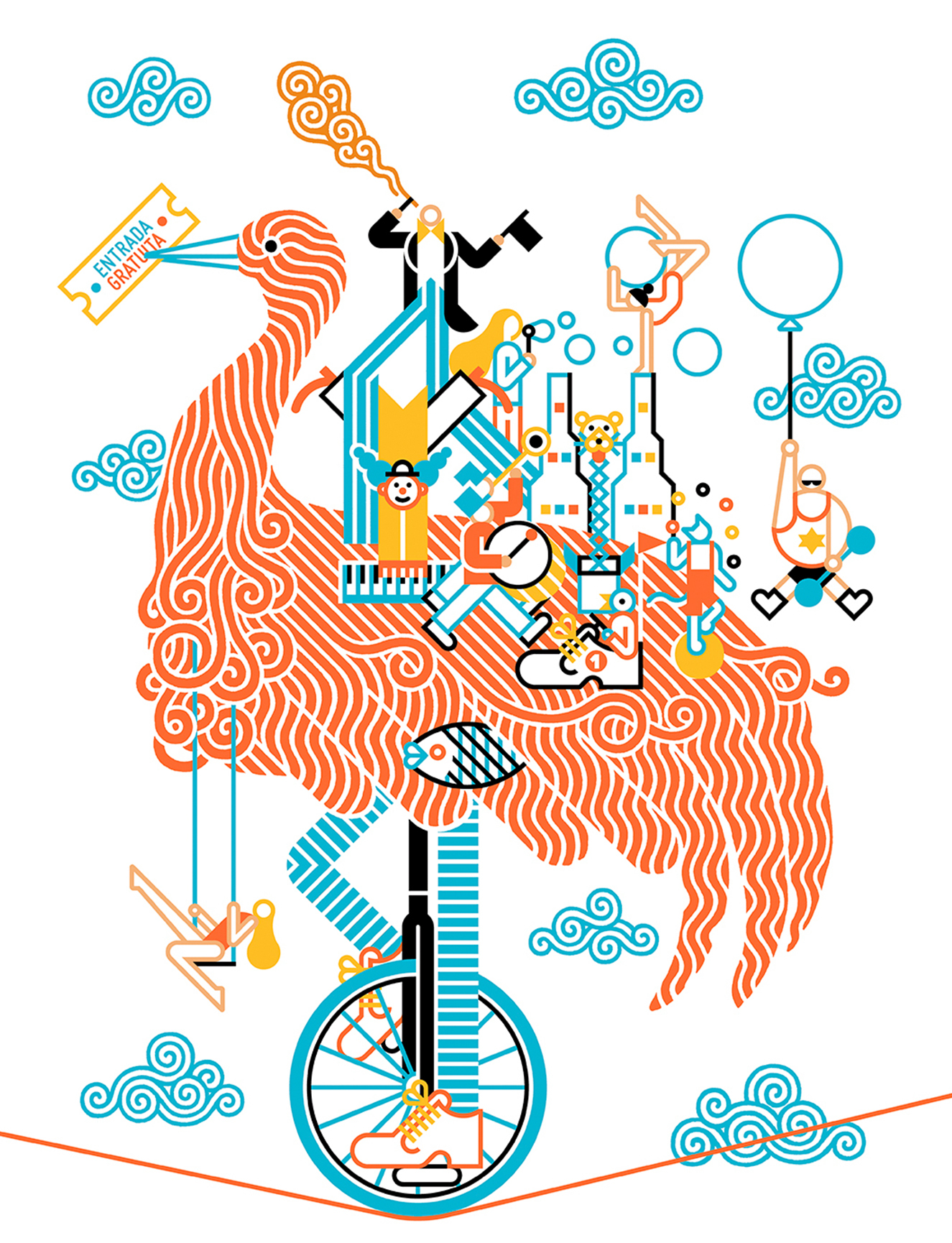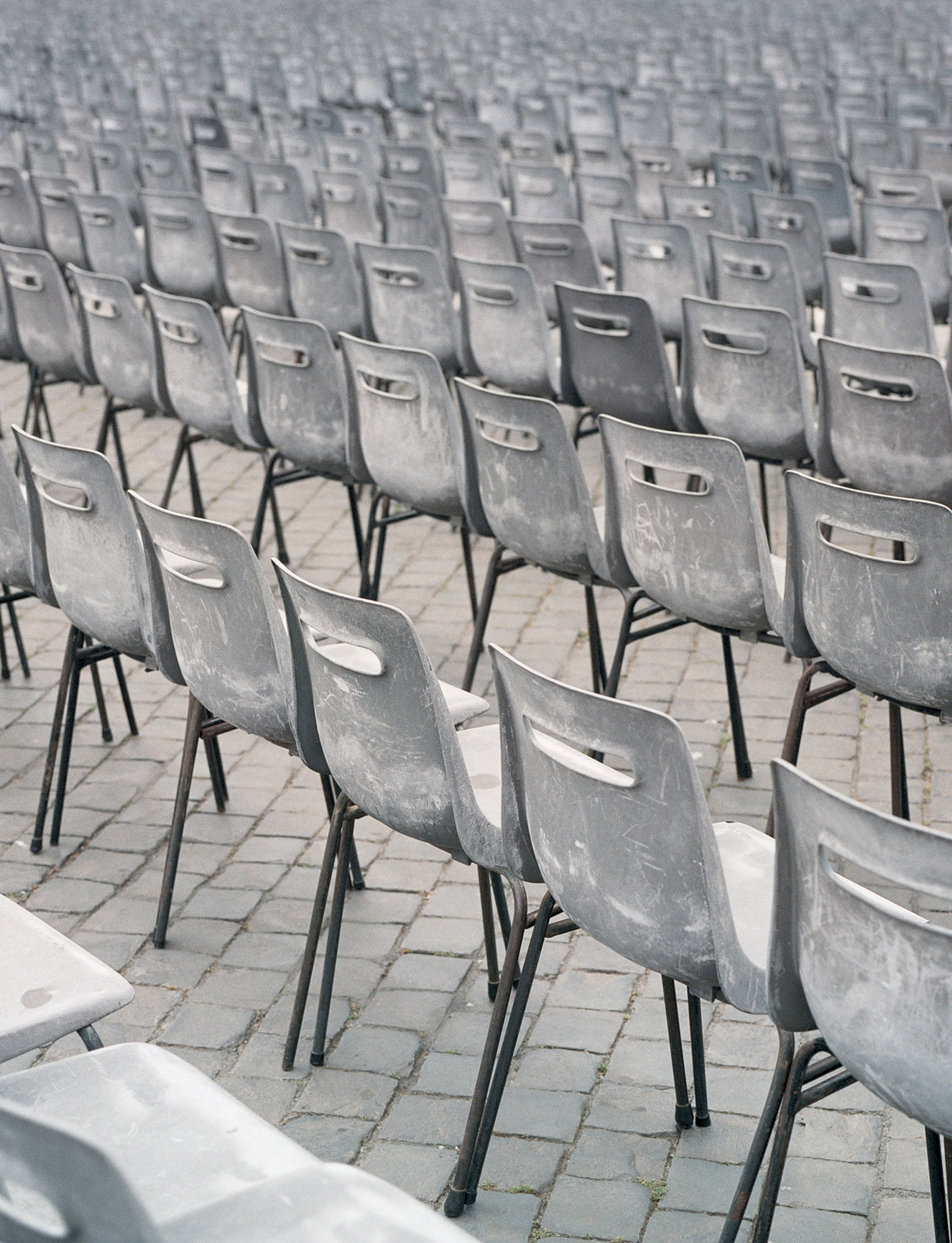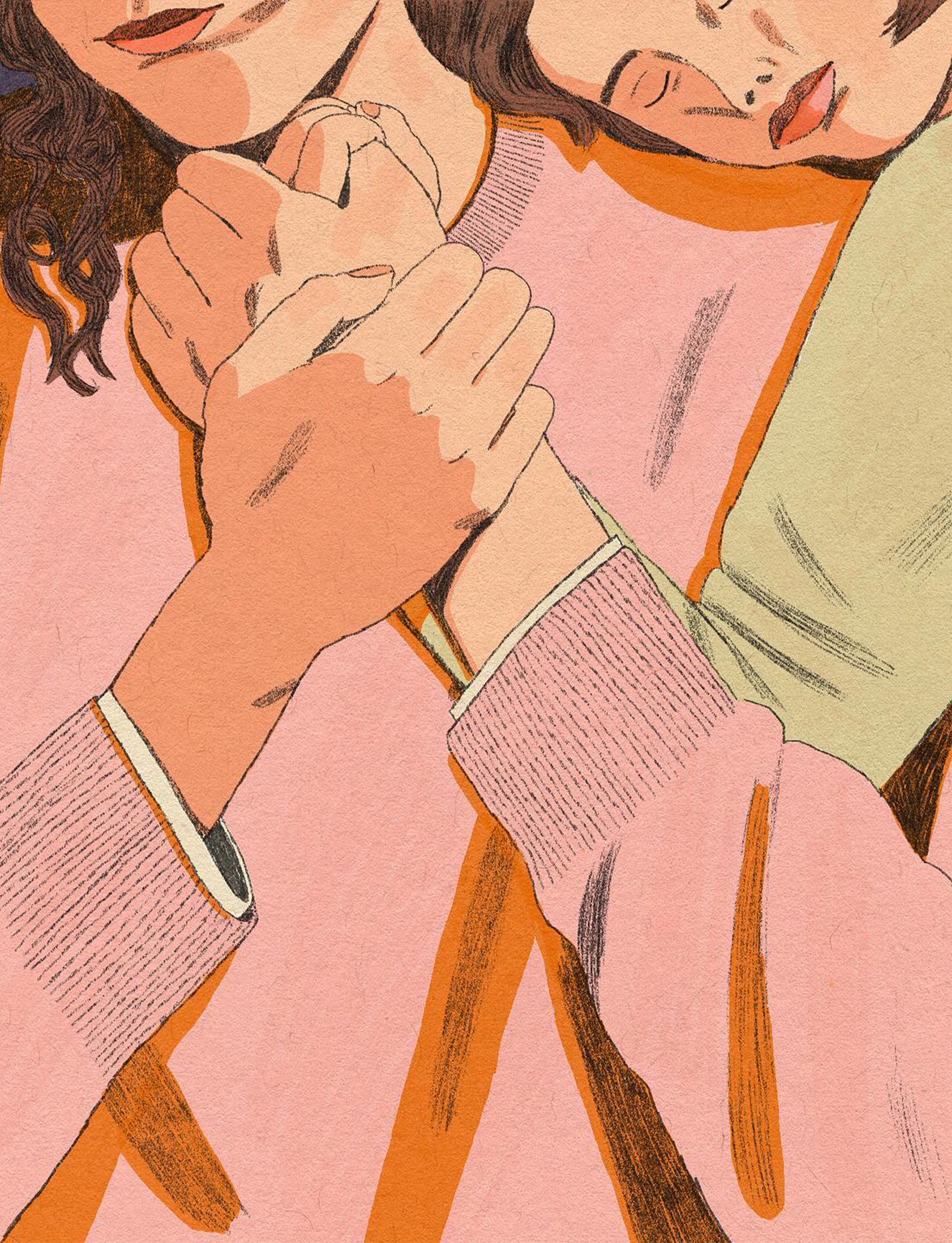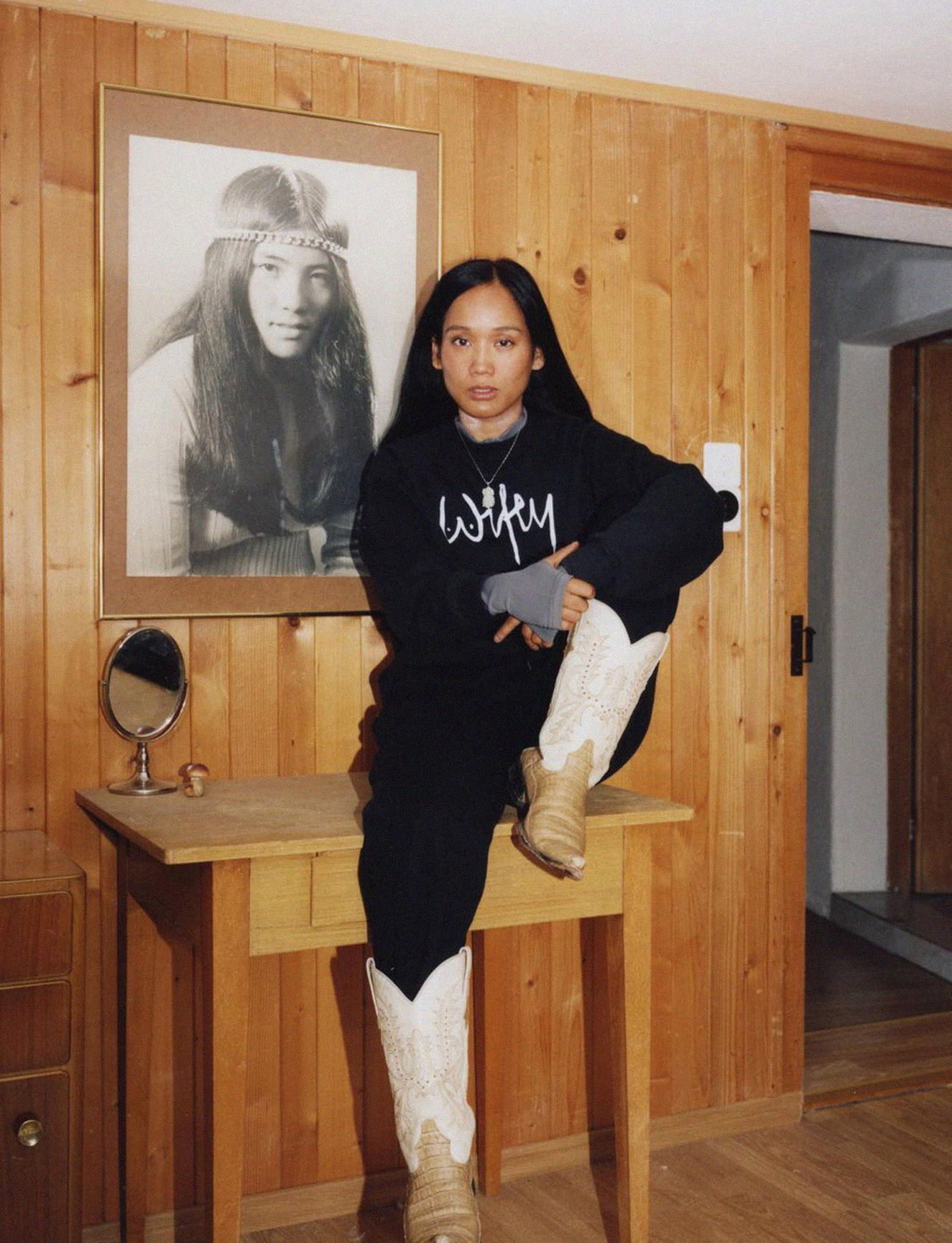When do you feel most creative?
Creativity is, for me, a difficult state to prevent. Sometimes I’m anywhere, like in a cafe or in the countryside, I start scribbling in my notebook and the best drawings come out. On the other hand, there are days when I try to plan a good drawing session in my studio and despite being in the perfect conditions, will have a total creative block. So I try not to obsess and instead just make the most of the lucid moments. The rest of the time, I try to surround myself with all those stimuli that feed my imagination, such as electronic music, reading, a walk by the sea or watching certain movies.
Tell me a little about your relationship to deadlines? Do you meet them easily? And do you need them to motivate you?
Over the years I have gotten better at calculating the time I need to carry out each part of my work and to organise myself. But in some projects I still find it a bit difficult to determine the time I will need. Especially since the conceptual phase of the process, that is, the search for ideas, is usually the most complicated part and sometimes you don’t know how long it will take. A good idea can appear very soon, but other times it takes time to find it.

Creativity is not a constant activity
In general I find that deadlines are usually shorter than you really need, because many people do not understand the work that goes into each image. This is a constant battle in our profession and it is important to fight for it, because good working conditions are not only about economic factors, but also about being able to work with comfortable deadlines. I think that the motivation to do a job should not be given by the deadline, but by the stimuli of the project itself. If you’re only focused on finishing a job, it means you’re not enjoying it. So I try to avoid falling into such assignments, and only agreeing to reasonable deadlines so I can do my job well.
Do you need routine? How much do you adhere to a ‘conventional’ 9-5 working week?
I don’t have a very defined routine because the workflow is a bit unpredictable and tends to vary from week to week. I try to keep normal working hours, but sometimes it’s complicated because most of my clients are based in different countries and timezones. Still, I try not to let this disrupt my workday too much. That being said, creativity is not a mechanical and constant activity, at least for me. I have very productive days that make up for others that are not so productive. This means that some days my working day ends much earlier, and others I have to extend a little more.
Do you work better in the morning or the evening?
In the afternoon is when I’m better placed to concentrate on drawing, and is when the ideas flow more easily. I have tried to change this but I have not succeeded; from what I have read, it is an inherent trait of each person and very difficult to change. So I have ended up resigning myself and I usually dedicate the mornings to administrative tasks such as making invoices, reviewing contracts or writing emails. However, sometimes there is no choice but to draw also in the morning, when a lot of work comes together.

Do you work on the weekends?
I try not to so that I can dedicate that time to rest and leisure. I really like to go on excursions, to the countryside or to the beach, to go out to dinner, to have a few beers or to the movies. As much as you love your job, I think doing other things is essential. From time to time I make exceptions and work on a Saturday or Sunday, but if that happens, it is because there is a really important project that deserves that effort.
Do you try to draw a clear line between ‘life’ and ‘work’ or does it all blend into one?
When your work is also your greatest passion, it pervades everything. I suppose that my life is nourished by that creative part and vice versa. But at the same time, I try to maintain a certain distance so that I can devote the necessary attention to other areas of life that are also important and spend time with the people I love.
I have been learning to regulate my self-demand
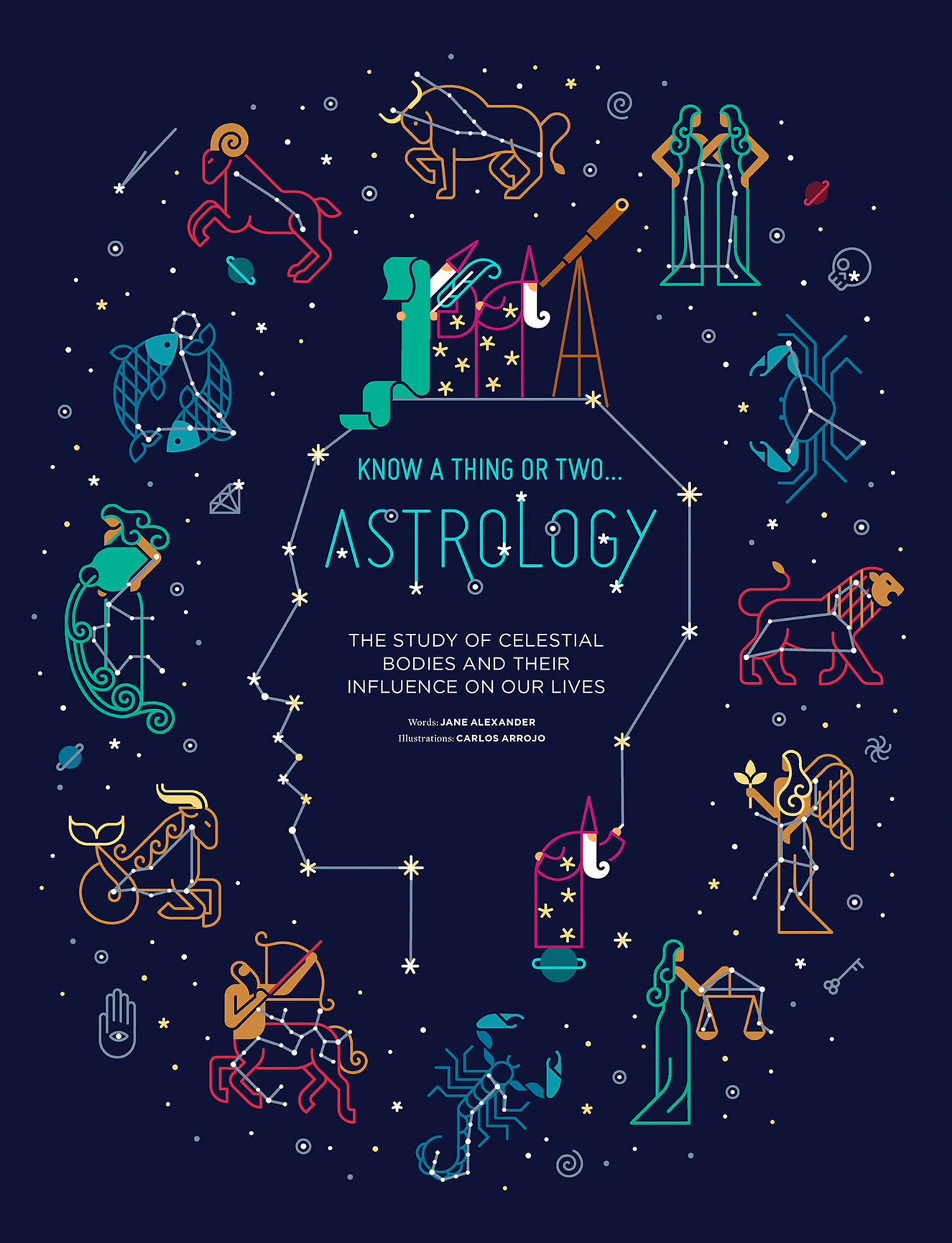
On days when you hit a creative block, what do you do to get past it?
Going for a walk or a run is for me the best way to break a blockage. When ideas don’t arrive, it’s useless to insist; it’s best to get up from your chair and leave the studio. I am lucky to live in a beautiful city, A Coruña, which is surrounded by the sea. A few steps from my house there is a promenade of several kilometres, next to great beaches. And if I walk a little further, I come to the oldest lighthouse in the world, the Tower of Hercules. After a walk I always return to work with more energy and a new perspective.
How has your relationship with your practice evolved over the years?
I think there are several things in which I have been improving, although there is still a lot to do. For example, in the early years it was very difficult for me to combine several projects at the same time. This is something that I have learned to manage over time and it seems fundamental to me, because in this profession the workflow is usually irregular and unpredictable. However, I have also been learning to regulate my level of self-demand. I continue to give my best in each assignment, but without letting it stress me out or separate me too much from other aspects of life. Recently I’ve felt that I’ve gained more security in my work. I owe this to all the people who have trusted me, and also to some wonderful projects that I have been lucky enough to do in the past few years. Seeing your illustrations on the street at a large scale, on a mural, or applied to products that will reach the hands of many people, is exciting and gives you a lot of confidence to move forward.
Read More: Creative Living: Flo Meissner



